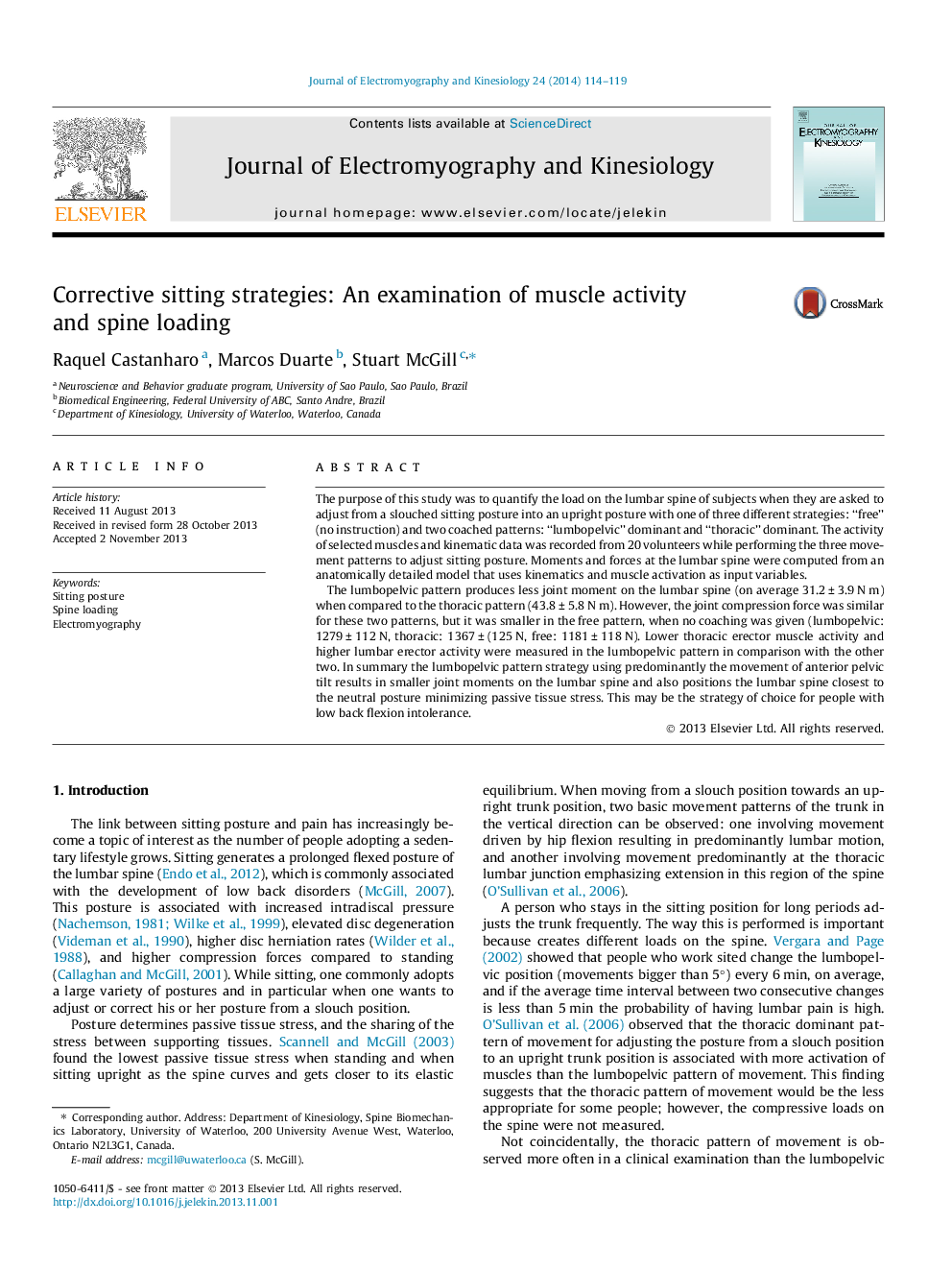| Article ID | Journal | Published Year | Pages | File Type |
|---|---|---|---|---|
| 4064639 | Journal of Electromyography and Kinesiology | 2014 | 6 Pages |
The purpose of this study was to quantify the load on the lumbar spine of subjects when they are asked to adjust from a slouched sitting posture into an upright posture with one of three different strategies: “free” (no instruction) and two coached patterns: “lumbopelvic” dominant and “thoracic” dominant. The activity of selected muscles and kinematic data was recorded from 20 volunteers while performing the three movement patterns to adjust sitting posture. Moments and forces at the lumbar spine were computed from an anatomically detailed model that uses kinematics and muscle activation as input variables.The lumbopelvic pattern produces less joint moment on the lumbar spine (on average 31.2 ± 3.9 N m) when compared to the thoracic pattern (43.8 ± 5.8 N m). However, the joint compression force was similar for these two patterns, but it was smaller in the free pattern, when no coaching was given (lumbopelvic: 1279 ± 112 N, thoracic: 1367 ± (125 N, free: 1181 ± 118 N). Lower thoracic erector muscle activity and higher lumbar erector activity were measured in the lumbopelvic pattern in comparison with the other two. In summary the lumbopelvic pattern strategy using predominantly the movement of anterior pelvic tilt results in smaller joint moments on the lumbar spine and also positions the lumbar spine closest to the neutral posture minimizing passive tissue stress. This may be the strategy of choice for people with low back flexion intolerance.
